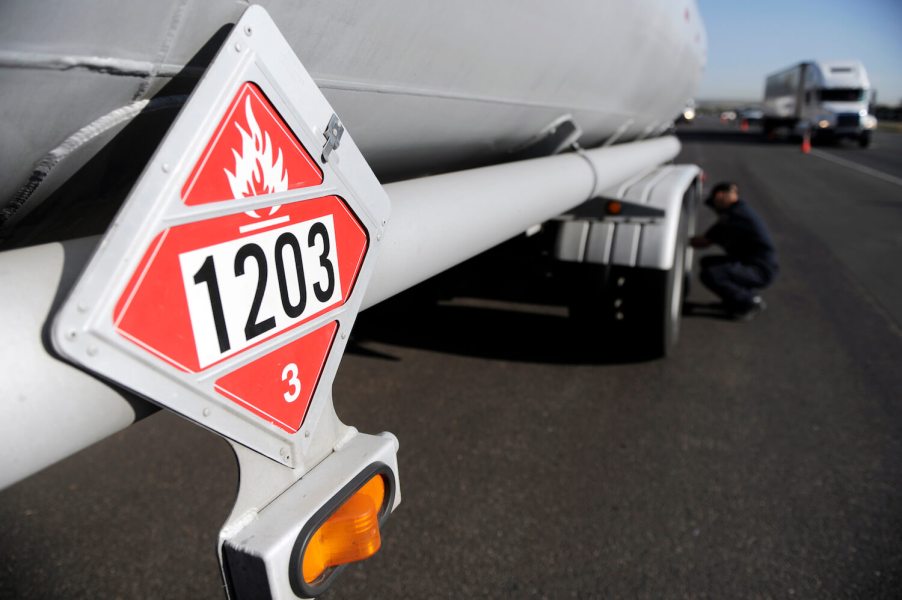
Why Do Some Semi-Truck Trailers Have a Red, Diamond-Shaped Sign?
Have you ever noticed a brightly colored, diamond-shaped sign on a passing semi-truck trailer? Unlike custom truck chrome or mudflaps, this is not a form of decoration. These diamond-shaped signs are placards that trucks must have while carrying hazardous materials.
What does hazmat placard mean?
The Department of Transportation requires semi-trucks and other vehicles display hazmat placards while they are transporting hazardous materials. The symbols and colors on this diamond-shaped placard communicate which type of hazardous material the vehicle is carrying.

Why do semi-trucks and other vehicles have to have hazmat placards? To warn everyone around them what is onboard. Other motorists have a right to know what’s on the highway. In an emergency situation this information could save lives.
For example, let’s say a semi-truck is involved in a collision. If emergency personnel will scan its trailer for hazmat placards. If, for example, it is carrying explosives and nearby cars are burning then emergency personnel will know to evacuate the area. Obviously, this information might save lives.
The DOT specifies that hazmat placards must be at least 9.84 inches tall and wide. They also must be able to withstand the elements for at least 30 days. The governmental agency requires specific colors and symbols for each of the nine classes of hazardous materials. Vehicles must have hazmat placards on either two sides or all four sides, based on the quantity of hazardous materials they are transporting.
What are the types of hazmat placards?
The most common hazmat placards on semi-truck trailers warn of one of nine classes of hazardous materials: explosives, gases, flammable liquids, flammable solids, oxidizing substances, toxic and infectious substances, radioactive, corrosive, and miscellaneous dangerous materials.

J. J. Keller & Associates, Inc. via Amazon
One of the most common placards is a bright red “Flammable Liquid” placard with the black outline of flames that you see on tanker trucks hauling gasoline or diesel fuel. It also has the numeral three because this is the third hazmat class.
A similar placard you might see is a “Flammable Gas.” This placard has white lettering and a number two. Nonflammable gases can still cause breathing problems if they escape, so they are marked with a green placard and the number two.
A more general placard is class six, for “toxic and infectious substances” is white with a skull and crossbones, the word “Toxic” and the number six.
Many hazmat placards also carry a unique four-digit identification code.
How do hazmat placards change?
Many semi-truck trailers carry a flippable placard system. This is a diamond-shaped sign that has multiple placards for multiple materials. The driver can flip through them like the pages of a book to communicate the hazardous materials they are currently carrying.

According to the DOT, hazmat placards must be able to stand up to the elements for 30 days. But they also must be updated based on what a semi-truck trailer is carrying. So what’s a driver who carries multiple hazardous materials in a given truck to do?
Label Master‘s “Spacemaster” system is a diamond-shaped frame that semi-truck trailer owners can order with any number of placards pre-loaded. The driver can then flip it to blank or to any of the placards to communicate exactly what is onboard.
Next, read the real reason some semi-trucks have a woman on their mudflaps or learn all about hazmat placards in the video below:






